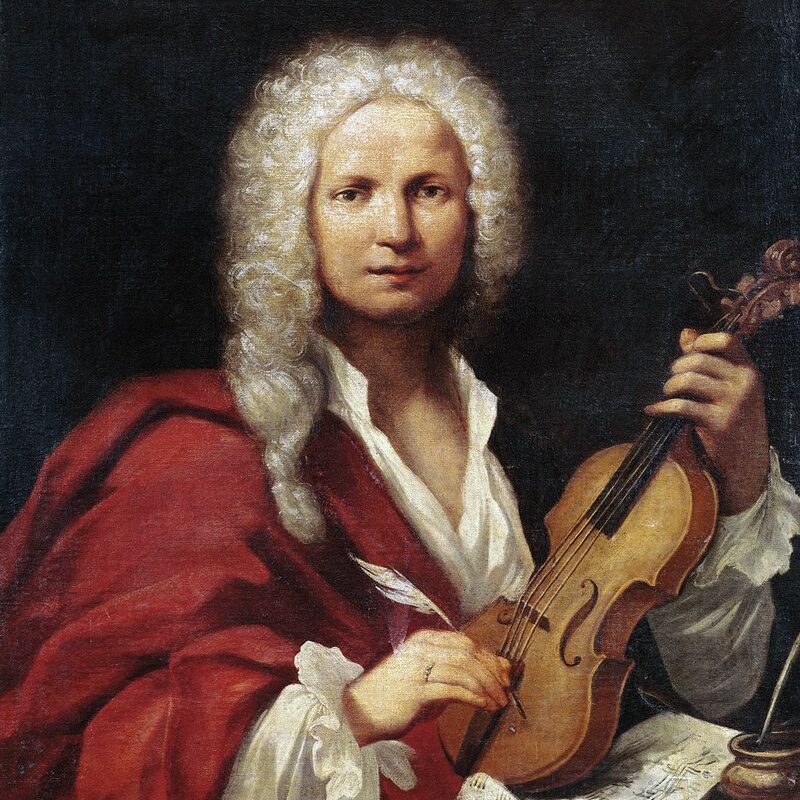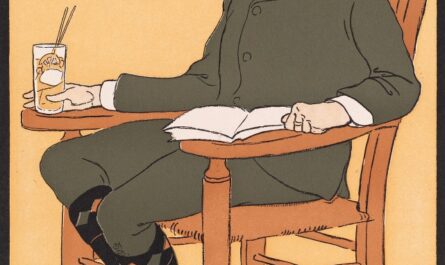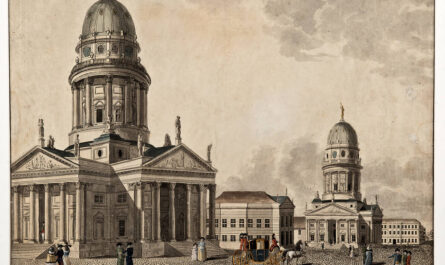On 4 March 1678, Antonio Lucio Vivaldi was born in Venice. Vivaldi’s father, Giovanni Battista Vivaldi, was a professional violinist who taught his young son to play. Through his father, Vivaldi met and learned from some of the finest musicians and composers in Venice at the time. In 1703, Vivaldi was ordained a priest, his shock of red hair earning him the nickname “il Prete Rosso” [the Red Priest]. While he remained ordained his entire life, he was not destined to preside over religious ceremonies. Shortly after his ordination, he was given a dispensation due health problems (likely asthma, described as a ‘tightness of the chest’), and appointed a violin teacher.
A short biography
Vivaldi was employed by the Ospedale della Pietà (Orphanage Pieta) in Venice most of his life. Despite being called an orphanage, this was actually a home for the illegitimate daughters of noblemen. These anonymous fathers assured their daughters’ education was well-funded, resulting in well-cared for students, opulent furnishings, and the highest musical standards. Under Vivaldi’s direction, the Ospedale’s choir and orchestra grew to be well-respected and in high demand for concerts. Vivaldi wrote concertos, cantatas, and sacred vocal music for the school in addition to being a gifted violinist himself. He often performed alongside his students. While maintaining his relationship with the Ospedale, Vivaldi also had a great interest in opera, which was the most popular form of music at the time. In 1713, the Ospedale permitted him one month’s leave to stage his first opera, Ottone in Villa.
During the 1713-4 season he also staged a production of an opera by Giovanni Alberto Rostori (1692-1753) for the Teatro Sant’ Angelo. Between 1717 and 1721, he composed his four-part masterpiece, the Four Seasons, which today remains the most famous example of Baroque music. Despite traveling frequently in later years, Vivaldi continued to write two concerti a month for the Ospedale. Orphanage records show he was paid for 140 concerti between 1723 and 1733. In 1725, Vivaldi returned to Venice, where he continued to stage operas at the Teatro Sant’ Angelo, operas now written by himself. Vivaldi’s reputation as a violinist – likely the best on Earth at the time – and composer was great throughout Europe, culminating in an invitation to play for the pope, as well as a knighthood from Emperor Charles VI of Austria.
Vivaldi Rediscovered
A century after Vivaldi’s death, a trove of manuscripts were discovered in Dresden, Germany, stored in a forgotten cabinet behind the organ in the Hofkirche. Back in 1716-1717 , the court violinist in Dresden, Johan Georg Pisendel, had accompanied the crown prince to Venice and spent the two years learning from Vivaldi. Pisendel took lessons in violin as well as composition, and as a result had many manuscripts from the composer. After Pisendel’s death in 1755, his private library was gathered, sealed, and stored in the Hofkirche, where amazingly, it remained undisturbed for a century. Around 1860, the manuscripts were discovered and moved to the Royal Public Library, which is now the Saxon State and University Library (SLUB Dresden) and houses the largest Vivaldi collection outside of Italy.
Like much of Europe after the first World War, Italy was politically and economically unstable. In 1921, Benito Mussolini was elected to parliament as the leader of the Nationalist Fascist Party. In 1926, the lira was revalued for political reasons and the economy subsequently plunged. In 1926, the San Carlo Salesian Monastery in Monferrato near Turin came across a trove of documents in their basement archives. Considering selling the papers to antique dealers, the monks contacted the Italian National University Library in Turin to put them in contact with someone who could evaluate what the documents were worth.
Dr. Alberto Gentili, professor of music history at the Italian National University University in Turin, opened the boxes to discover volume after volume of Vivaldi signatures. Gentili found himself in a delicate situation. If he he let on about the stunning discovery, the monastery might decide to sell off the pieces individually to the highest bidder, and the entire collection could be lost forever. If Gentili alerted the government – by then under Mussolini’s Fascist dictatorship – the government would then decide which institution would handle the collection. Naturally, Gentili and the University administration wanted the documents for the University collection, but they lacked adequate funds to make such a purchase. With utmost secrecy, Gentili was able to secure a Turin banker, Roberto Foa, who agreed to buy the volumes and donate them to the university in honor of his deceased infant son, Mauro. The university accepted the donation and took possession of ninety-seven volumes of manuscripts and autographs.
As Gentili began to sift through the collection, it quickly became apparent there were substantial volumes missing. Some of the manuscripts were missing only the odd or even page numbers, indicating they had been hastily separated some time in the past. Gentili was able to determine the volumes had been gathered by a Venetian collector in the late 1700s, some time after Vivaldi’s death and sold on to Count Giacomo Durazzo of Genoa, the ambassador to Venice. In 1893, long after Durazzo died, the collection had been split between two remaining Durazzo sons. One brother, Marcello Durazzo, died in 1922 and left his portion of the collection to the monastery. This was the Mauro Foa collection Professor Gentili had already secured.
An archivist at the University Library was able to track down the last remaining Durazzo heir, Giuseppe Durazzo, and the remainder of the collection in 1927. After three years and steep demands, Giuseppe finally agreed to sell the remainder of the manuscripts to the University. Once again, Professor Gentili secured another wealthy benefactor who agreed to buy the manuscripts and donate them in memory of an infant son. The collection of 319 documents was finally completed 30 October 1930.
The establishment of the Turin Collection should have sparked a Vivaldi Renaissance, but there was much more going on in Europe in 1930 than the rediscovery of this virtuoso composer.
Ezra Pound Plays a Key Role
A perhaps unlikely key figure in Vivaldi’s rediscovery in the early twentieth century was Ezra Pound – yes, that Ezra Pound, the famed poet and editor of T.S. Eliot. Pound was of course famous for his poetry, but had also scored two operas and written several solo pieces for the violin. His companion, Olga Rudge, was a concert violinist and enthusiast of Italian music. The two met in Paris in 1922. In addition to her concert performances, Olga was also employed by the Accademia Musicale Chigiana in Siena starting in 1933. She traveled to Turin two years later to examine the Vivaldi collection for the Accademia. Clearly, she was impressed by the composer’s works, as she founded the Centro di Studi Vivaldiani, which honors Vivaldi’s works, in 1938. Rudge even served as its first director.
In 1938, Pound requested copies of the manuscripts in Dresden. He then transcribed the microfilm copies and arranged for performances of these pieces to be held in Rapello. He continued to organize the Rapello concerts until 1940. Crucially, he also passed along copies of these manuscripts to the Accademia Chigiana. After this, he requested copies of the Turin archive be sent over from the University Library, which was eventually accomplished after a well-placed phone call from Pound. From these, Rudge was able to produce a catalog of Vivaldi’s over three hundred works for the Accademia Chigiana.
If documenting all these manuscripts wasn’t enough, at the end of 1938, Pound wrote a letter to the UK’s The Musical Times, urging the leading musicians and music scholars of the day to give proper consideration to Vivaldi’s works. Musicologists of the day were skeptical of Pound’s enthusiasm and routinely scoffed at, as they saw it, his lack of understanding of music. The experts were dismissive of the catalog, insisting Vivaldi was simply one of so many no-name violinists working during the Baroque Era. In a January 1939 letter responding to their derision, Pound writes, “… my minimum claim is that one can’t be certain Vivaldi is merely another composer like 60 others until one has at least heard or read through the 309 inedited concerti lying in Turin.”
Pound goes on to clarify his understanding of a what makes a better composer, as opposed to a passable one; the better composer makes clear on the page how he wants the notes and pauses played, as Vivaldi had. “I admit my acquaintance with his work has been favorably conditioned; I mean I have heard his line as rendered by a violinist exceptionally sensitive to qualities which are either there on the page or are suggested to the violinist by which IS on the page.”
He continues, “I am perfectly willing to admit a possible or even probable component of error in my present tentative (note the word tentative) hunch. Quite possible that a simple-minded bloke like myself, copying out the Dresden concerti note by note, and being pleased by the quality of Vivaldi’s mind therein apparent, become more enthusiastic over the possibilities of the unpublished Vivaldi than I w[ould] if I heard even the same concerti played (as I have) by a heavy and heavily led orchestra.”
While Pound’s written advocacy may have fallen on deaf ears, he had done much to ensure Vivaldi’s works would endure long enough to finally be properly appreciated.
The War Years
In 1936, Italy and Nazi Germany had signed a treaty of friendship. Two years later, Italy had passed anti-Jewish legislation allowing for the confiscation of Jewish property. Professor Gentili was born an ethnic Jew, as were the benefactors who donated the manuscripts to the University. By 1938, Gentili had been forced out of public life, as well as his professorship and was no longer overseeing the Vivaldi manuscripts.
A Vivaldi Week was organized in Siena the following year, but unfortunately, the eruption of World War II once again prevented much of the revival before it could really get underway. In 1940, the University Library was damaged during air raids, as Turin was heavily bombed from June of 1940 through 1945. Amazingly, none of the Turin Vivaldi manuscripts were damaged. The University’s archives were moved to the Castle of Montiglio in 1942, then moved back in 1945 after the war. However, the Dresden collection did not fare as well. During the air raids there, the fire burned so intensely, the security safe holding the library’s rare documents melted. Many documents were lost, including some Vivaldi manuscripts. Thankfully, Ezra Pound had already had them copied and cataloged, so the world was spared losing those works entirely.
Vivaldi Celebrated
Concert violinist and Hollywood soundtrack composer Louis Kaufmann debuted a portion of Vivaldi’s Four Seasons in December of 1947. Only a portion was performed because the complete score was then unknown. Eventually, Kaufmann was able to locate a copy of the complete score in Brussels, and in 1950, he recorded his entire performance of Vivaldi’s the Four Seasons. This performance was awarded the Grand Prix du Disque in France that year, and would later be inducted to the Grammy Hall of Fame. Being awarded the Grand Prix made Vivaldi’s name prestigious, and subsequent newspaper coverage introduced his name to the masses. In 1951, Kaufmann began a series of solely Vivaldi performances in Paris, New York, and London, sparking an international renaissance of interest in the composer’s work.
In 1957, Vivaldi’s Gloria was published in its entirety, as Vivaldi had written it. The same year, this piece made its debut at the first Festival of Baroque Choir Music at Brooklyn College. From there, Vivaldi’s music took on a life of its own, and quickly came a staple of choral music all over the world. After two hundred years, Vivaldi had finally taken his place as a world-renowned and frequently performed composer.
Image: Probable portrait of Vivaldi, c. 1723, via Wikmedia. Public domain.




